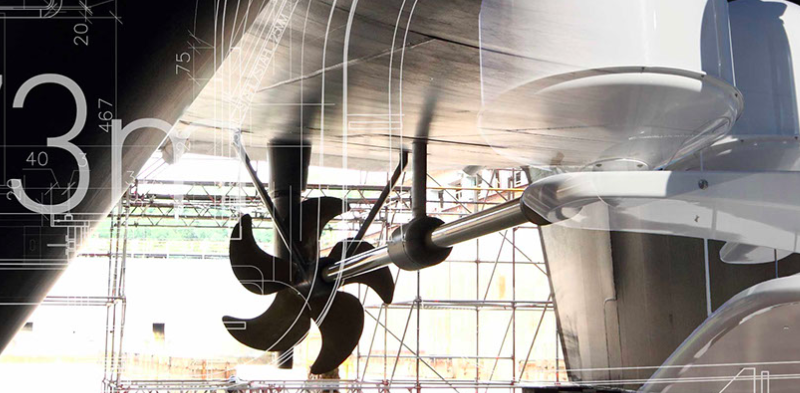Debunking hydrogen designs

Hydrogen propulsion could well be the sustainable future of yachting, it’s certainly true for the commercial shipping segment, but the idea you can simply swap your combustion engine for a hydrogen equivalent and still enjoy your yacht exactly as was is a myth.
Assuming a fuel cell is used, which is more efficient than burning hydrogen in a combustion engine, it is just one component of a much larger system to provide the power onboard to drive both propulsion and domestic systems. The other systems, made up of balance of plant components, are also often ignored in the initial concept stage. For example, fuel cells require air and cooling similar to combustion engines as well as dedicated ventilation routes to make them work and these are bulkier than those required for a traditional engine.
Ivo Veldhuis, technical manager, Mayfair Marine, a London-based technical marine consultancy, told SYI he believes the fuel cell technology is matured and ready for deployment in yachts — take a look at Lurssen’s project for example.
“However the design integration of the fuel cell system with its many sub-components and the demands this places on the layout of the yacht is not fully understood yet,” said Veldhuis. “Designers have not yet found out how to arrange the layout of the yacht in such a way that a harmonious balance is achieved between the demands of the owner and of the fuel cell system.”
The best example of this is probably the placement of liquid hydrogen tanks, many concepts place the tanks horizontally at the base of the vessel leaving the above decks uninhibited. But for best operation the tanks should be installed vertically therefore designs have to account for this loss of space across multiple decks.
Fuel volume has also been referred to as the greatest challenge to hydrogen yacht construction because liquid hydrogen (LH2) in comparison to marine diesel LH2 requires 3.8x the volume. Even with improved efficiency of the fuel cell accounted for.
Mayfair Marine founder, Howard Lowe told SYI: “In reality this volume is larger as the tank sizes for LH2 are not the same as integrated hull tanks for diesel and the ventilation routing for hydrogen also requires additional volume inside the yacht.
“However, this challenge of fuel volume can be managed by bringing the autonomy of the yacht in line with actual operations, for instance having an autonomy of two to three weeks between refuelling and enhance the autonomy further by adding battery packs,” said Lowe.
Taking the above into account, Lowe recommends the new build route instead of a refit project, enabling correct design integration of the fuel cell system from the get-go. Nonetheless, a refit project is feasible, but changing diesel engines for fuel cells is not a direct swap, for instance the diesel mechanical drive system has to be changed to an electrical one and the ventilation requirements of the hydrogen storage and fuel cells must also be considered.
“These requirements often lead to a full rebuild rather than a simpler retrofit. There is also the option in a refit scenario of a just changing the generators from diesel to hydrogen and keeping the existing main propulsion, as the generators typically run for many more hours than the propulsion plant with many yachts not spending so much time underway. This option places less demands on the required changes and whilst still challenging is less so than changing both propulsion and domestic power systems,” said Lowe.
Mayfair Marine advocate the use of hydrogen, in particular LH2, over all other alternative fuels (methanol, ammonia etc) because of its improved efficiency. As a member of the maritime working group of Hydrogen Europe, an organisation focused on developing the hydrogen economy in Europe, Mayfair’s team have noticed that any alternative fuels requiring an extra conversion on board, such as methanol, adds complexity and reduces efficiency of the powerplant.
Veldhuis explained: “Such conversion steps are not necessary with hydrogen and fuel cells. In our belief the future for yachting and in particular large yachting lies with hydrogen.”
He added: “There are many ways of producing hydrogen without the carbon penalty and ideally the hydrogen produced must be done with renewable energy. Nonetheless, in the initial stages of changing the fuel for the yachting industry it is important that the fuel demand grows and hence hydrogen from a combination of renewable and non-renewable sources can be allowed.”
Hydrogen then is the “sensible solution” to provide yachts with zero-emission capability and the work being undertaken by yards such as Lurssen are all positive developments for the industry. However, emphasis must be put on the fundamental differences between our traditional, combustion-engined superyachts and the hydrogen-powered vessels of tomorrow.

